Partnerships CleaWongAncient One | ||
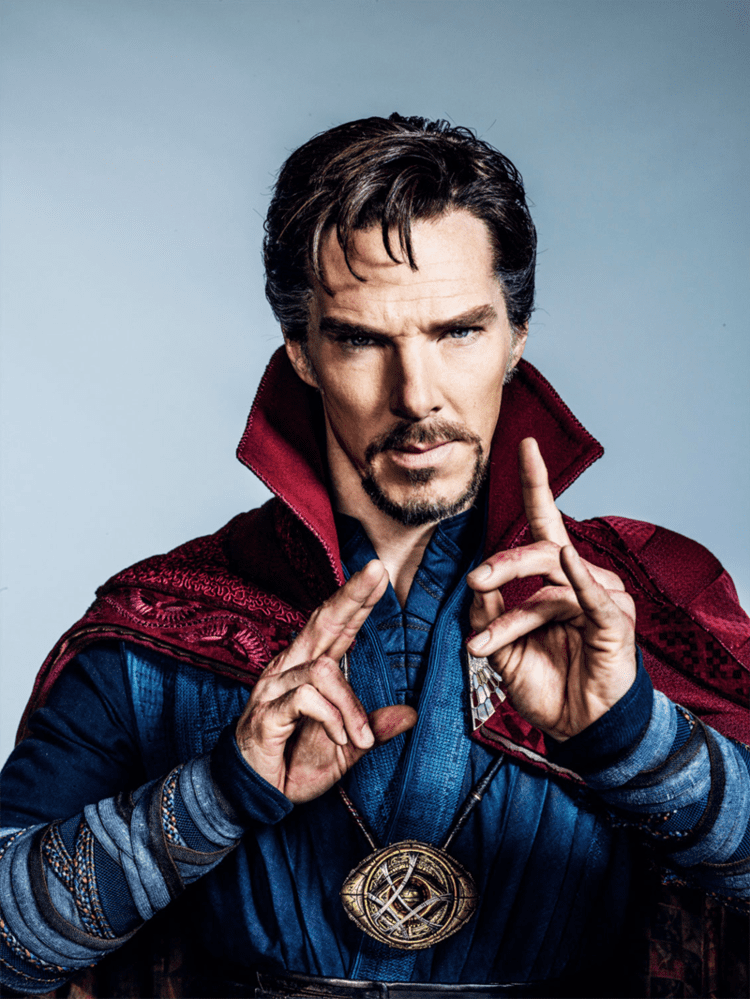 | ||
Team affiliations AvengersNew AvengersIlluminatiDefendersThe OrderMidnight Sons Notable aliases Stephen Sanders, Vincent Stevens Movies Doctor Strange, Avengers: Infinity War, Doctor Strange: The Sorcerer Supreme, Dr. Strange Played by Similar | ||
How to kill doctor strange how to kill superheroes
Dr. Stephen Vincent Strange (known as Doctor Strange) is a fictional superhero appearing in American comic books published by Marvel Comics. Created by artist Steve Ditko and writer Stan Lee, the character first appeared in Strange Tales #110 (cover-dated July 1963). A former neurosurgeon, Strange serves as the Sorcerer Supreme, the primary protector of Earth against magical and mystical threats. Debuting in the Silver Age of comics, the character has been featured in several comic book series and adapted in a variety of media including video games, an animated television show, and films. Inspired by story tellings of black magic and Chandu the Magician, Strange was created to bring a different kind of character and themes of mysticism to Marvel Comics.
Contents
- How to kill doctor strange how to kill superheroes
- The powers of doctor strange explained
- Creation
- Early years
- 1980s
- 1990s
- 2000s
- 2010s
- Fictional character biography
- Powers and abilities
- Book of the Vishanti
- Orb of Agamotto
- Other versions
- Television
- Film
- Video games
- Novels
- References
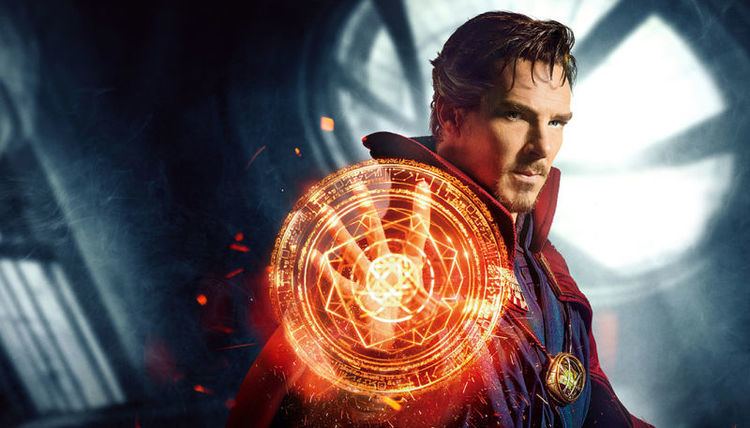
Doctor Strange was a brilliant but egotistical surgeon. After a car accident destroys the nerves in his hands and hinders his ability to perform surgery, he searches the globe for a way to repair them and encounters the Ancient One. After becoming one of the old Sorcerer Supreme's students, he becomes a practitioner of both the mystical arts as well as martial arts. Along with knowing many powerful spells, he has a costume with two mystical objects—the Cloak of Levitation and Eye of Agamotto—which give him added powers. Strange is aided along the way by his friend and valet, Wong, and a large assortment of mystical objects. He takes up residence in a mansion called the Sanctum Sanctorum, located in New York City. Later, Strange takes the title of Sorcerer Supreme.
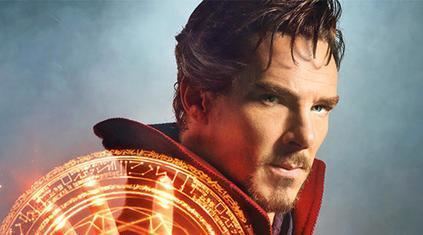
In 2008, Doctor Strange was ranked 83rd in Wizard's "200 Greatest Comic Book Characters of All Time" list, and in 2012 was ranked 33rd in IGN's list of "The Top 50 Avengers". He was also ranked 34th on IGN's list of "Top 100 Comic Book Heroes". The character was first portrayed in live-action by Peter Hooten in the 1978 television film Dr. Strange. Benedict Cumberbatch stars as the character in the Marvel Cinematic Universe, first appearing in the role in the 2016 film Doctor Strange.
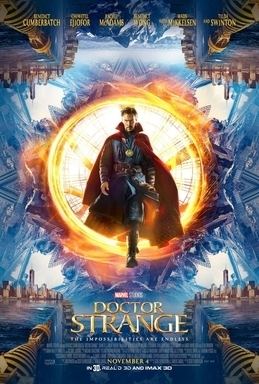
The powers of doctor strange explained
Creation
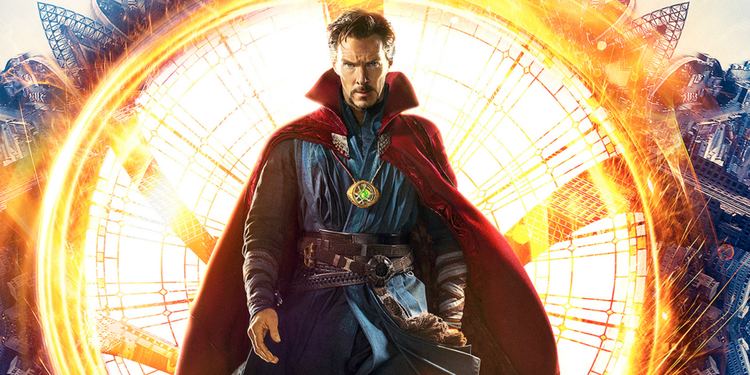
Artist Steve Ditko and writer Stan Lee have described the character as having been originally the idea of Ditko, who wrote in 2008, "On my own, I brought in to Lee a five-page, penciled story with a page/panel script of my idea of a new, different kind of character for variety in Marvel Comics. My character wound up being named Dr. Strange because he would appear in Strange Tales." In a 1963 letter to Jerry Bails, Lee called the character Ditko's idea, saying,

Well, we have a new character in the works for Strange Tales (just a 5-page filler named Dr. Strange) Steve Ditko is gonna draw him. It has sort of a black magic theme. The first story is nothing great, but perhaps we can make something of him-- 'twas Steve's idea and I figured we'd give it a chance, although again, we had to rush the first one too much. Little sidelight: Originally decided to call him Mr. Strange, but thought the "Mr." bit too similar to Mr. Fantastic -- now, however, I remember we had a villain called Dr. Strange just recently in one of our mags, hope it won't be too confusing!
Early years
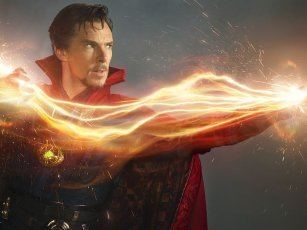
Doctor Strange debuted in Strange Tales #110 (July 1963), a split book shared with the feature "The Human Torch". Doctor Strange appeared in issues #110–111 and #114 before the character's eight-page origin story in #115 (December 1963). Scripter Lee's take on the character was inspired by the Chandu the Magician radio program that aired on the Mutual Broadcasting System in the 1930s. He had Doctor Strange accompany spells with elaborate incantations, such as the "Eye of Agamotto", the "Wand of Watoomb", and "Hoary Hosts of Hoggoth"; though these often referenced established mythological figures, Lee has said he never had any idea what the incantations meant and used them simply because they sounded mystical and mysterious. Ditko showcased surrealistic mystical landscapes and increasingly vivid visuals that helped make the feature a favorite of college students at the time. Comics historian Mike Benton wrote,
The Dr. Strange stories of the 1960s constructed a cohesive cosmology that would have thrilled any self-respecting theosophist. College students, minds freshly opened by psychedelic experiences and Eastern mysticism, read Ditko and Lee's Dr. Strange stories with the belief of a recent Hare Krishna convert. Meaning was everywhere, and readers analyzed the Dr. Strange stories for their relationship to Egyptian myths, Sumerian gods, and Jungian archetypes.
"People who read Doctor Strange thought people at Marvel must be heads [i.e., drug users]," recalled then-associate editor and former Doctor Strange writer Roy Thomas in 1971, "because they had had similar experiences high on mushrooms. But I don't use hallucinogens, nor do I think any artists do." Originating in the early 1960s, the character was a predictor of counter-cultural trends in art prior to them becoming more established in the later 1960s, according to comic historian Bradford W. Wright: "Dr. Strange remarkably predicted the youth counterculture's fascination with Eastern mysticism and psychedelia."
As co-plotter and later sole plotter in the Marvel Method, Ditko took Strange into ever-more-abstract realms. In a 17-issue story arc in Strange Tales #130-146 (March 1965 – July 1966), Ditko introduced the cosmic character Eternity, who personified the universe and was depicted as a silhouette filled with the cosmos. As historian Bradford W. Wright described,
Steve Ditko contributed some of his most surrealistic work to the comic book and gave it a disorienting, hallucinogenic quality. Dr. Strange's adventures take place in bizarre worlds and twisting dimensions that resembled Salvador Dalí paintings. Inspired by the pulp-fiction magicians of Stan Lee's childhood as well as by contemporary Beat culture, Dr. Strange remarkably predicted the youth counterculture's fascination with Eastern mysticism and psychedelia. Never among Marvel's more popular or accessible characters, Dr. Strange still found a niche among an audience seeking a challenging alternative to more conventional superhero fare.
Golden Age artist/writer Bill Everett succeeded Ditko as artist with issues #147-152, followed by Marie Severin through #160 and Dan Adkins through #168, the final issue before the Nick Fury feature moved to its own title and Strange Tales was renamed Doctor Strange. Expanded to 20 pages per issue, the Doctor Strange solo series ran 15 issues, #169-183 (June 1968 – November 1969), continuing the numbering of Strange Tales. Thomas wrote the run of new stories, joined after the first three issues by the art team of penciler Gene Colan and inker Tom Palmer through the end.
After plans were announced for a never-realized split book series featuring Doctor Strange and Iceman, each in solo adventures, Strange next appeared in the first three issues (December 1971 – June 1972) of the quarterly showcase title Marvel Feature. He appeared in both the main story detailing the formation of superhero "non-team" the Defenders, and the related back-up story. The character then starred in a revival solo series in Marvel Premiere #3-14 (July 1972 – March 1974). This arc marked the debut of another recurring foe, the entity Shuma-Gorath, created by writer Steve Englehart and artist Frank Brunner. In issues #8-10 (May – September 1973), Strange was forced to shut down the Ancient One's mind, causing his mentor's physical death. Strange then assumed the title of Sorcerer Supreme. Englehart and Brunner created another multi-issue storyline featuring sorcerer Sise-Neg ("Genesis" spelled backward) going back through history, collecting all magical energies, until he reaches the beginning of the universe, becomes all-powerful and creates it anew, leaving Strange to wonder whether this was, paradoxically, the original creation. Stan Lee, seeing the issue after publication, ordered Englehart and Brunner to print a retraction saying this was not God but a god, to avoid offending religious readers. The writer and artist concocted a fake letter from a fictitious minister praising the story, and mailed it to Marvel from Texas. Marvel unwittingly printed the letter and dropped the retraction.
The Marvel Premiere series segued to the character's second ongoing title, Doctor Strange: Master of the Mystic Arts, also known as Doctor Strange vol. 2, which ran 81 issues (June 1974 – February 1987). Doctor Strange #14 featured a crossover story with The Tomb of Dracula #44, another series which was being drawn by Gene Colan at the time. In Englehart's final story, he sent Dr. Strange back in time to meet Benjamin Franklin.
1980s
Strange met his allies Topaz in #75 (February 1986) and Rintrah in #80 (December 1986). The series ended with a cliffhanger as his home, the Sanctum Sanctorum, was heavily damaged during a battle. Among the losses was Doctor Strange's entire collection of mystic books and other important artifacts. As a consequence, Strange was now considerably weaker and several spells designed to protect humanity from vampires and the evil serpent god Set expired.
The title was discontinued so that the character's adventures could be transferred to another split book format series. Strange Tales vol. 2, #1-19 (April 1987 – October 1988) was shared with street heroes Cloak and Dagger. This new Doctor Strange series resolved Strange's quest to reclaim his power and missing artifacts, as well as resurrecting the Defenders, who had died in the last issue of that team's title.
1990s
Strange was returned to his own series, this time titled Doctor Strange: Sorcerer Supreme, which ran 90 issues (November 1988 – June 1996). The initial creative team was writer Peter B. Gillis and artists Richard Case and Randy Emberlin, with storylines often spanning multiple issues. Strange lost the title of "Sorcerer Supreme" in issues #48-49 (December 1992 – January 1993) when he refused to fight a war on behalf of the Vishanti, the mystical entities that empower his spells. During this time the series became part of the "Midnight Sons" group of Marvel's supernatural comics. Doctor Strange found new sources of magical strength in the form of chaos magic, as well as a magic construct he used as a proxy. He would form the Secret Defenders with a rotating roster of heroes, and reunite with the original Defenders. Strange regained his title in Doctor Strange: Sorcerer Supreme #80 (August 1995).
Strange appeared with the Human Torch and the Thing in the one-shot publication Strange Tales vol. 3, #1 (November 1994).
The character was featured in several limited series. The first was Doctor Strange: The Flight of Bones #1-#4 (February – May 1999), with a series of spontaneous combustions by criminals instigated by old foe Dormammu. Strange was the catalyst for the creation of a trio of sorceresses in Witches #1-#4 (August – November 2004). The Strange limited series (November 2004 – July 2005) by writers J. Michael Straczynski and Samm Barnes updated the character's origin. Another limited series, Doctor Strange: The Oath #1-5 (December 2006 – April 2007), written by Brian K. Vaughan and illustrated by Marcos Martin, focused on Strange's responsibilities as sorcerer and doctor.
Doctor Strange appeared in four graphic novels over the years: Doctor Strange: Into Shamballa (1986); Doctor Strange & Doctor Doom: Triumph and Torment (1989); Spider-Man/Dr. Strange: The Way to Dusty Death (1992); and Dr. Strange: What Is It That Disturbs You, Stephen? (1997).
2000s
Strange appeared as a supporting character for the bulk of the 2000s. He appeared regularly in The Amazing Spider-Man under J. Michael Straczynski, before being cast into a time loop by Baron Mordo. He later appeared on and off in The New Avengers, where he was stated as being part of the secret group known as the Illuminati to deal with future threats to Earth. Ultimately Strange joined the team and allowed them to use his home as a base after the events of Civil War, which he sat out. Doctor Strange was critical of the federal Superhuman Registration Act and aided the anti-registration Avengers team led by Luke Cage.
During the Bendis run, Doctor Doom attacked the Avengers and manipulated the Scarlet Witch into decimating the mutant population; Doctor Strange's failure to stop the latter and his failure to realize Doom's hand in the former caused him to start to doubt his abilities. After he was forced to use dark magic to confront an enraged Hulk, followed by further use of dark spells to save the New Avengers from the Hood's supervillain army, Strange renounced his status as Sorcerer Supreme, as he felt that he was no longer worthy of it. The Eye of Agamotto passing the mantle to Brother Voodoo.
He was also featured in The Order, which spun out of the 2000 Defenders revival, and the Indefensible Defenders mini-series.
2010s
Doctor Strange appeared as a regular character throughout the 2010-2013 The New Avengers series. Brother Voodoo, now newly appointed Sorcerer Supreme Doctor Voodoo, sacrifices himself in order to stop the powerful mystical entity Agamotto from reclaiming the Eye. A guilt-ridden Strange rejoins the New Avengers, and offers the team his valet Wong to act as their housekeeper.
Strange eventually regains his position of Sorcerer Supreme, but is possessed by a demon and becomes leader of the Black Priests.
After the various Marvel universes merge into one, Doctor Strange acts as righthand man of Doctor Doom, who has become the ruler of this world after erasing all recollection of the previous separate realities that existed. Circumstances force Strange to open a pod that releases the surviving heroes of the original Marvel continuity, knowns as Earth-616. Doom kills Doctor Strange.
In 2015, Jason Aaron and Chris Bachalo team up for the fourth volume of Doctor Strange. A new character, reluctant librarian Zelma Stanton, agrees to reorganize Strange's magical library. Brother Voodoo returns, and the series and a spinoff, Dr. Strange: Last Days of Magic, sees such characters as Medico Mistico, Magik, Scarlet Witch, Mahatma Doom, Professor Xu, Monako, and Alice Gulliver. With the laws of magic fundamentally altered, and with the loss of his former resources, Doctor Strange is forced to depend on his own physical skills and inventive use of his few functional spells. He eventually no longer has access to most of his former spells or his levitating cape.
Fictional character biography
Dr. Stephen Strange is an egotistical doctor who only cares about wealth from his career. After a car accident shatters the bones in his hands, the damage prevents him from being able to conduct surgery when his hands begin to tremble uncontrollably. Too proud to take on a teaching job, Strange desperately searches for a way to restore his hands.
After he exhausts his funds, he becomes a derelict. Depressed and still searching, Strange, while walking near the docks, overhears two sailors talking about a hermit called the Ancient One (who is actually the Earth's Sorcerer Supreme) in the Himalayas, who can cure any ailment. Strange uses the last of his funds to travel to the Himalayas to seek out the aged mystic. The Ancient One refuses to help Strange because of his selfishness, but senses a good side that he attempts to bring to the surface. He fails, but Strange's goodness appears when he discovers the Ancient One's disciple, Baron Mordo, attempting to kill the old man. After a confrontation with Mordo leads to his being shackled with restraining spells preventing him from either attacking Mordo or warning the Ancient One, Strange desperately and selflessly accepts the Ancient One's offer to become his apprentice to have some hope of helping the old man. The Ancient One, pleased at Strange's profound change of heart, accepts the westerner and promptly frees him from the restraining spells while explaining he was aware of Mordo's treachery all along. Strange soon becomes Mordo's most enduring enemy, as the Ancient One teaches the doctor the mystic arts. After completing his training, Strange returns to New York and takes up residence within the Sanctum Sanctorum, a townhouse located in Greenwich Village, and is soon assisted by his personal servant Wong.
As the Ancient One's disciple, Strange encounters the entity Nightmare, and other mystical foes before meeting Dormammu, a warlord from an alternate dimension called the "Dark Dimension". Strange is aided by a nameless girl, later called Clea, who is eventually revealed to be Dormammu's niece. When Strange helps a weakened Dormammu drive off the rampaging Mindless Ones and return them to their prison, he is allowed to leave unchallenged.
Powers and abilities
Strange is a practicing magician who draws his powers from mystical entities such as Agamotto, Cyttorak, Ikonn, Oshtur, Raggadorr, and Watoomb, who lend their energies for spells. Strange also wields mystical artifacts including the Cloak of Levitation which enables him to fly; the Eye of Agamotto, an amulet whose light is used to negate evil magic; the Book of the Vishanti, a grimoire which contains knowledge of white magic; and the Orb of Agamotto, a crystal ball which is used for clairvoyance.
In addition to his magical abilities, Strange is trained in several martial arts disciplines, and has shown proficiency with numerous magically conjured weapons including swords and axes. Strange was a skilled neurosurgeon before nerve damage impaired his hands.
Doctor Strange is described as "the mightiest magician in the cosmos" and "more powerful by far than any of your fellow humanoids" by Eternity, the sentience of the Marvel Universe. He holds the title of Sorcerer Supreme from 1973 (with the death of the Ancient One) to the present, except during an interruption from 1992 to 1995. He relinquishes the title once again in 2009, but reclaims it in 2012 when he proves himself willing to protect the world even without the title.
Book of the Vishanti
The Book of the Vishanti is written by unknown authors and is closely associated with Doctor Strange. It is the greatest known source of white magical knowledge on Earth. The Book of the Vishanti contains spells of defensive magic and is indestructible. Its counterpart, the Darkhold, contains all the knowledge of black magic in the Marvel Universe, and is likewise indestructible. It is possible to destroy single pages of either book, but the balancing spell in the other book is destroyed as well to maintain a mystical balance. A collective of the three powerful magical beings - Agamotto, Oshtur and Hoggoth, known as the Vishanti - must allow the spell to be destroyed.
Even though the book is a tome of benevolent magic, the spells within can still be dangerous when used improperly. This is proven when a young, inexperienced Strange tried to use the Book to resurrect his dead brother Victor, but the spell, known as the Vampiric Verses, caused Victor to become the vampire Baron Blood years later.
Apart from spells and mystical knowledge, the book also contains information about persons and events. It is unknown how the Book is able to contain up to date and recent information even though it was written thousands of years ago.
The first known owner of the book was the Atlantean sorcerer Varnae from around 18,500 BC. The next known owner was the Babylonian god Marduk Kurios. Marduk set a griffin to guard the Book. The sorcerer known as the Ancient One traveled back in time to c. 4000 BC and defeated the griffin and returned to the 20th century. The Ancient One would remain the book's owner, despite a brief loss when the dark wizard Kaluu returned the Book to the Griffin, until he deemed his student, Doctor Strange, worthy of taking it.
Doctor Strange keeps the book in his town house library in New York City's Greenwich Village. He briefly lost the book when he destroyed his home to prevent the alien wizard Urthona from taking his magical artifacts, but the book was saved by Agamotto, who transported it to his realm and returned it to Strange some time later.
Orb of Agamotto
The Orb of Agamotto is a fictional magical item in the Marvel Comics universe. It is a powerful scrying crystal ball owned and used by Doctor Strange. It can also be used to detect magic in use anywhere in the world and provide Strange with a location and visual. The orb rests in Doctor Strange's Sanctum Sanctorum in a room called the Chamber of Shadows. It usually is inside a display case with three curved legs. When summoned, the glass covering rises and the ball levitates. While powerful, the Orb has been blocked by exceptionally powerful mystic forces (such as Umar) who do not want their exact location known. On at least one occasion, it has been used to open a dimensional portal to the realm of Agamotto.
Other versions
The character has starred in several alternate universe titles. In the miniseries Marvel 1602 #1-#8 (November 2003 – June 2004), Sir Stephen Strange is both the court physician and magician to Queen Elizabeth I. The title Spider-Man 2099 introduced a female version of Strange who shares her body with a demon in issue #33 (1995). The miniseries Strange #1-#6 (November 2004 – April 2005), written by J. Michael Straczynski and Samm Barnes, with artwork by Brandon Peterson, reimagined the character's origin, allies and enemies in a contemporary setting.
In the miniseries Marvel Zombies #1-#5 (February – June 2006), Strange is infected with a zombie virus along with many other heroes. He reappears in the second sequel, Marvel Zombies 3 #1-#4 (December 2008 – March 2009)
In the alternate future universe of the Marvel imprint MC2, Doctor Strange is no longer the Sorcerer Supreme, the title there held by Doc Magnus. Doctor Strange uses his remaining power to reform the superhero team the Defenders in A-Next #3 (1998) and to fight the Norse god of mischief, Loki, Last Hero Standing #4 (Feb. 2005).
The Ultimate Marvel title Ultimate Marvel Team-Up introduced a version of the character called "Stephen Strange, Jr.", the son of the original Doctor Strange, in Ultimate Marvel Team-Up #12 (July 2002). The character was killed in battle by the Ultimate Marvel version of Dormammu in the miniseries Ultimatum #1-#5 (January – September 2009).
Two months before the debut of the sorcerer-hero Doctor Strange, Stan Lee (editor and story-plotter), Robert Bernstein (scripter, under the pseudonym "R. Berns"), and Jack Kirby (artist) introduced a criminal scientist and Ph.D. with the same surname (called "Carl Strange"). Making his sole appearance in the Iron Man story "The Stronghold of Dr. Strange" in Tales of Suspense #41 (1963), the character gained mental powers in a freak lightning strike.
